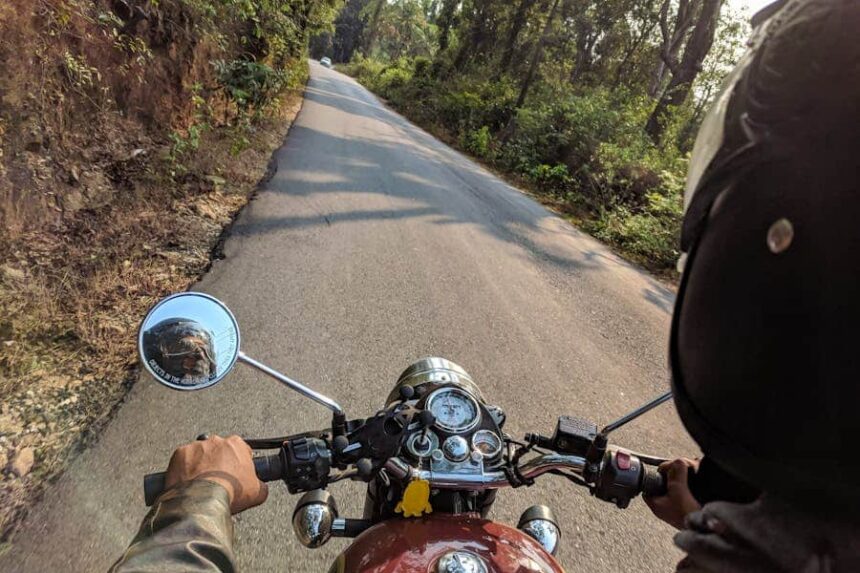Transporting a motorcycle might seem straightforward at first glance, but it involves more than just loading a bike onto a trailer. Whether you’re moving interstate, purchasing a motorcycle from a seller in another city, or heading to a long-distance riding event, understanding how motorcycle transport works can save you time, money, and headaches.
This guide will walk you through the essential considerations when it comes to Motorcycle transport—from why you might need it, to how to prepare your bike, and what to expect throughout the process.
Why Use Motorcycle Transport Services?
While motorcycles are designed for the road, riding across states isn’t always the most practical or comfortable option. Long-distance travel can put unnecessary wear on your bike, expose it to harsh weather, and increase the risk of breakdowns or accidents. That’s where motorcycle transport comes in.
Here are some reasons people opt for motorcycle transport:
- Convenience: Great for when you’re relocating, going on an extended holiday, or moving motorcycles for shows or races.
- Preservation: Helps reduce mileage and wear and tear, keeping your bike in top condition.
- Time-Saving: If you’re on a tight schedule, transporting your motorcycle frees up time and eliminates long rides.
- Safe Delivery: Professionals know how to secure and protect your bike, reducing the risk of transport-related damage.
Types of Motorcycle Transport
There are different options available depending on your needs and budget:
Open Transport
This is one of the more cost-effective methods. Motorcycles are loaded onto an open trailer, which is typically shared with other bikes. While it’s safe, the main drawback is exposure to the elements like rain, wind, or road debris.
Enclosed Transport
This premium option offers complete protection from weather and road hazards. Ideal for high-value or vintage motorcycles, enclosed transport ensures the bike arrives in the same condition it left.
Crated Transport
Your motorcycle is secured within a wooden or metal crate, which is then loaded onto a truck. This method provides stability and maximum protection but requires partial disassembly of the motorcycle, such as removing mirrors or draining fluids.
DIY vs. Professional Motorcycle Transport
DIY Transport
Transporting your bike yourself might seem cost-effective, but it comes with certain responsibilities and risks:
- Requires Equipment: You’ll need a trailer, proper straps, and a loading ramp.
- Safety Concerns: Incorrect loading can cause damage to the bike or your vehicle.
- Physical Effort: Loading and securing a motorcycle isn’t always easy, especially solo.
Professional Services
Hiring a motorcycle transport service offers several benefits:
- Expertise: Professionals have the right tools and experience to transport motorcycles safely.
- Insurance: Most reputable services provide coverage for potential damage during transit.
- Peace of Mind: With someone else handling the logistics, you can focus on your move or trip without added stress.
How to Prepare Your Motorcycle for Transport
Whether using a service or doing it yourself, preparation is key. A properly prepped motorcycle is less likely to suffer damage or create delays.
- Clean Your Bike: Dirt and grime can hide scratches or leaks. A clean surface helps with inspection before and after transport.
- Inspect for Damage: Note any existing marks or issues and take photos as a reference.
- Check Fluids and Tires: Ensure there are no leaks and that the tires are properly inflated.
- Disable the Alarm: If your bike has an alarm system, turn it off to avoid issues during loading or unloading.
- Fuel Level: Keep it about 1/4 full—just enough to move it when needed, but light enough for safe handling.
- Remove Loose Accessories: Saddlebags, GPS units, or aftermarket add-ons should be removed or securely fastened.
Cost Factors to Consider
Several factors affect the cost of motorcycle transport:
- Distance: Naturally, longer trips cost more.
- Vehicle Size and Weight: Heavier or bulkier motorcycles may require special handling.
- Transport Type: Enclosed and crated methods usually cost more than open transport.
- Urgency: Express services or short-notice bookings can increase pricing.
- Pickup and Drop-off Options: Door-to-door services are more convenient but often more expensive than depot-to-depot arrangements.
Requesting multiple quotes and comparing inclusions can help you find the best value. While it may be tempting to choose the cheapest option, look closely at what’s offered in terms of service and protection.
Tips for Choosing a Motorcycle Transport Provider
Selecting the right company is crucial for a smooth experience. Keep these tips in mind:
- Check Experience: Choose companies with a strong history in motorcycle transport.
- Read Customer Reviews: Feedback from past clients can provide insights into reliability and service quality.
- Ask About Insurance: Understand the coverage details in case of damage or delays.
- Inquire About the Process: Know how bikes are loaded, transported, and delivered so there are no surprises.
Conclusion
Motorcycle transport is a practical solution for riders who value convenience, safety, and peace of mind. Whether you’re sending your bike across the state or the country, understanding the available options, preparing your motorcycle properly, and choosing the right provider can make the journey stress-free.
Instead of worrying about long rides, weather changes, or logistics, you can rest easy knowing your motorcycle is in good hands and ready for the next adventure when it arrives.




